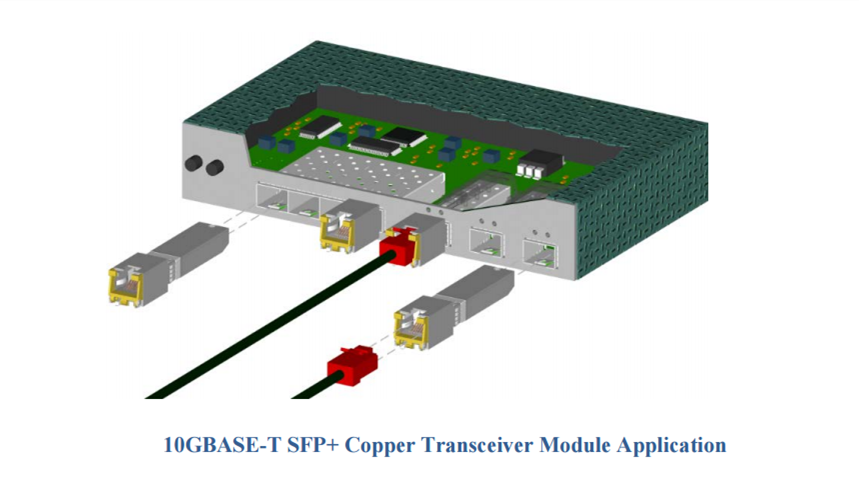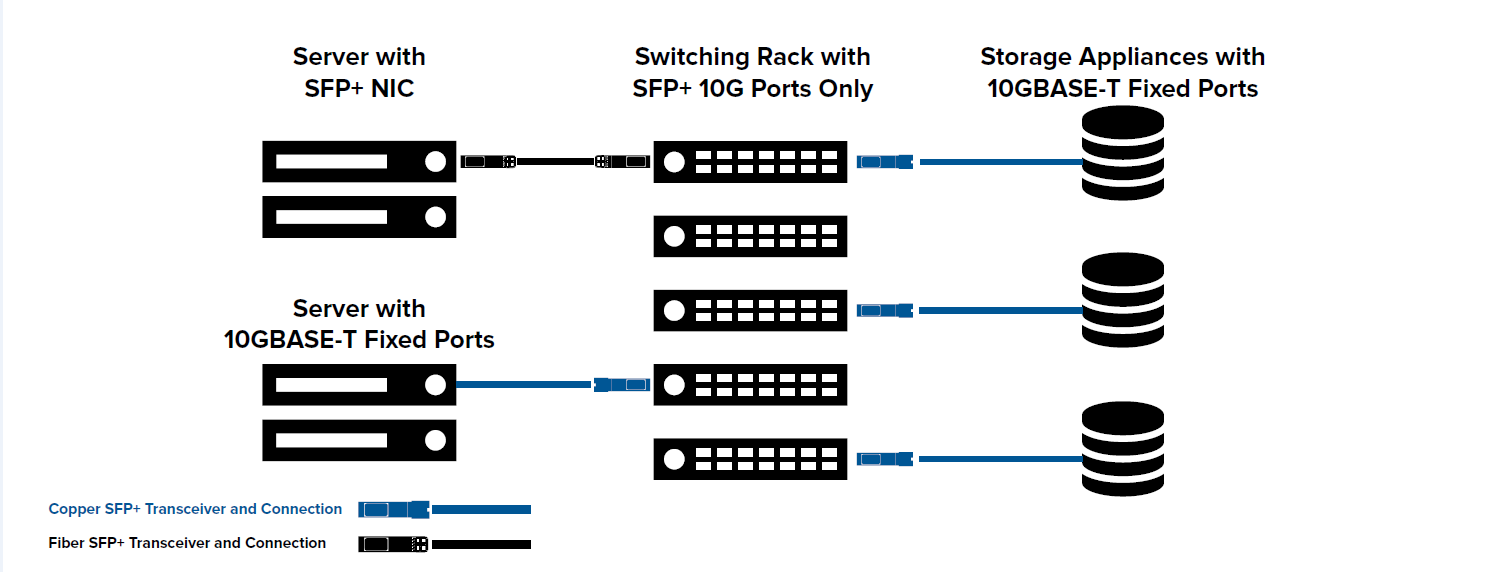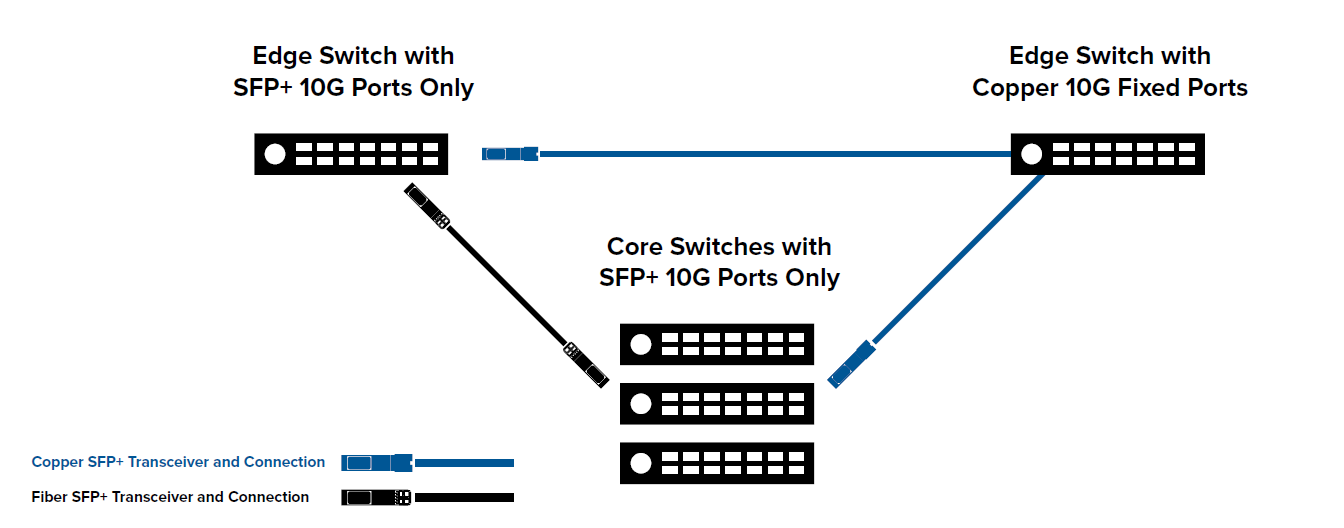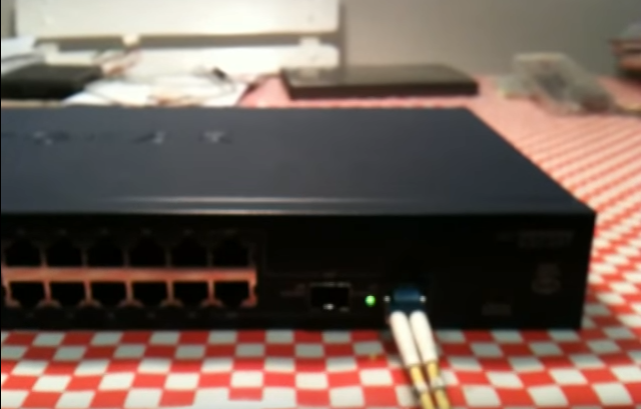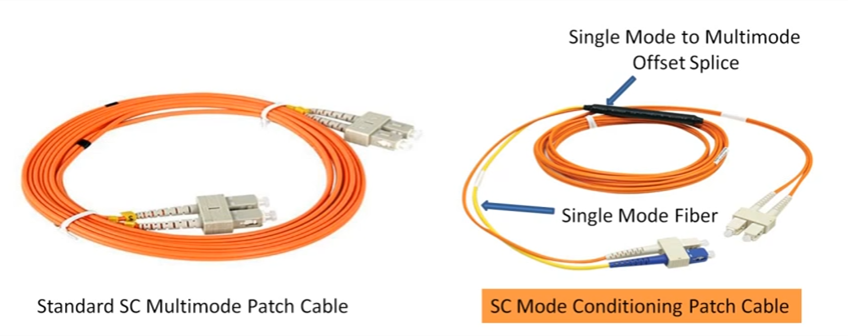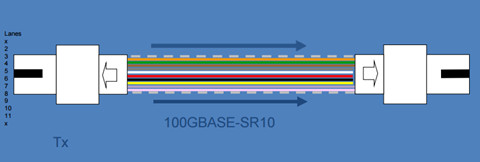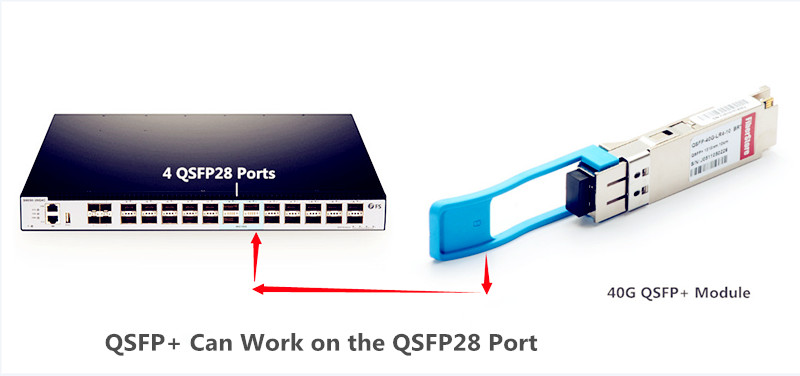Nowadays, QSFP28 transceiver is the mainstream of 100G optics market. So as to meet different 100G deployment needs, QSFP28 modules usually come in several standards such as QSFP28 PSM4, QSFP28 CWDM4, IR4, SR4 and LR4, etc . Compared with CXP and CFP 100G optical transceivers, QSFP28 optics are the smallest form factors that provide a high-density and high-speed solution for 100G networks. A previous article provide detailed information about what distance QSFP28 optics can support for 100GbE deployment. Today’s article will introduce 100G QSFP28 cabling solutions by the use of MTP/MPO cables and duplex LC cables.
QSFP28 modules offer four channels of high-speed differential signals with each data rates up to 28Gbps, and will meet 100 Gbps (4x25 Gbps) in the end. QSFP28 transceiver is available in 100GBASE-SR4, 100GBASE-LR4, PSM4 and CWDM4 standards. The interface of 100G QSFP28 transceivers includes MTP/MPO and LC duplex cables.
Cabling Solutions of QSFP28 MPO
100G QSFP28 100GBASE-SR4 and 100GBASE-PSM4 transceiver modules are the 100G transceiver modules that need to be connected with MTP/MPO interfaces. 100GBASE-SR4 QSFP28 complies with QSFP28 MSA and IEEE 802.3bm specifications. It can support a link length of 100 m. 100G PSM4 specification defines requirements for a point-to-point 100 Gbps link over eight single-mode fibers with a supporting distance of 500 m. Figure 1 shows the QSFP28 SR4 with MTP connector.
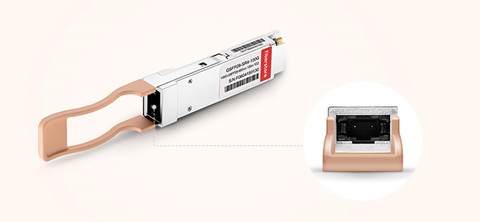
MTP/MPO fiber cable is commonly used to connect QSFP+ or QSFP28 transceivers with single-mode and multimode categories, which is specially designed for 40G/100G high-density data center cabling system. MTP/MPO fiber cables are usually terminated with 12-fiber, 24-fiber, 48-fiber MTP/MPO connectors. Single-mode MTP/MPO cable is able to carry signal over long distance while multimode is for short-reach application. QSFP28 mpo
- 100GBASE-SR4 QSFP28 over Multimode MTP cable
100GBASE-SR4 QSFP28 works over a 12-fiber multimode MTP/MPO patch cable (four not used) for short-reach 100G connection. Figure 2 shows the direct connection between 100GBASE-SR4 QSFP28 modules by the use of Female to Female 12-Fibers OM4 trunk Cable.

- 100GBASE-PSM4 QSFP28 Over Single-mode MTP Cable
Similar to 100GBASE-SR4 QSFP28, 100GBASE-PSM4 QSFP28 also requires 12-fiber MTP/MPO patch cable. But QSFP28 PSM4 matches with single-mode MTP/MPO fiber patch cable instead of the multimode MTP/MPO .patch cables.
100G QSFP28 Optics With Single-mode Duplex LC Interface
100GBASE-CWDM4 QSFP28 and 100GBASE-LR4 QSFP28 are the 100G modules designed for long-reach applications terminated with duplex LC interface. 100GBASE-CWDM4 QSFP28, as the name implies, it is a full duplex module with the use of CWDM technologies. It integrates transmit and receive path in one module. 4 lanes of optical signals (25 Gbps per lane) firstly are multiplexed into an LC duplex interfaces on the transmitting side. Then data streams are de-multiplexed by an integrated optical de-multiplexer and transformed to an electrical CAUI-4 output driver. QSFP28 CWDM4 can support a distance of 2 km over single-mode fibers. Figure 3 shows the interconnection of 100G QSFP28 LR4 module connected with MTP to LC breakout and MTP cassette to achieve a total 400G data rate transmission.

100GBASE-LR4 QSFP28 is a 4x25Gbps transceiver module that can support link lengths up to 10 km. 100GBASE-LR4 QSFP28 also operates over single-mode fiber cable with duplex LC connector by multiplexing and de-multiplexing optical signals. Common single-mode duplex LC patch cable can meet the cabling requirement of these two transceivers. For high density data center, HD LC fiber patch cable is highly recommended as the push-pull tab is easy to remove and can save space.
Conclusion
With compact size and low power consumption, 100G QSFP28 modules are becoming the most popular 100G optics on the market. QSFP28 SR4 and QSFP28 PSM4 transceivers terminate with MTP/MPO interfaces, while QSFP28 LR4 and CWDM4 modules connect with LC duplex cables. Besides QSFP28 transceivers, there are QSFP28 DAC and AOC cable available for short-reach 100G connections.

